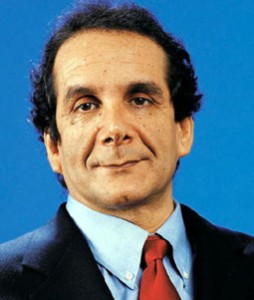by | ARTICLES, ELECTIONS, OBAMA, POLITICS, TAXES
There was a recent media frenzy when Obama announced that General Colin Powell endorsed him for President. The NY Times helpfully noted that
Mr. Powell said he supported Mr. Obama in part because he is ending the war in Afghanistan and has a strong counter-terrorism record. “There’s some very, very strong neo-conservative views that are presented by the governor that I have some trouble with,” he said. “I’m not quite sure which Governor Romney we’d be getting with respect to foreign policy,” he said.
Along with Powell, Obama’s military support includes General Wesley Clark, USA, (Ret), Major General Paul Eaton, USA (Ret, Admiral Donald Gutter, USN, former JAG of the Navy, (Ret) and Admiral John Nathman, USN, (Ret).
Reuters, ABC, Huffington Post, CNN — they all lead the day with stories about this news. A repeat endorsement from 2008.
Obama too has been pushing the narrative, even including it in a video in swing states.
Sounds impressive, right?
So who endorsed Romney from the military?
A friend from Bearing Drift posted the list below:
Admiral James B. Busey, USN, (Ret.)
General James T. Conway, USMC, (Ret.)
General Terrence R. Dake, USMC, (Ret)
Admiral James O. Ellis, USN, (Ret.)
Admiral Mark Fitzgerald, USM, (Ret.)
General Ronald R. Fogleman, USAF, (Ret)
General Tommy Franks, USA, (Ret)
General Alfred Hansen, USAF, (Ret)
Admiral Ronald Jackson Hays, USN, (Ret)
Admiral Thomas Bibb Hayward, USN, (Ret)
General Chuck Albert Horner, USAF, (Ret)
Admiral Jerome LaMarr Johnson, USN, (Ret)
Admiral Timothy J. Keating, USN, (Ret)
General Paul X. Kelley, USMC, (Ret)
General William Kernan, USA, (Ret)
Admiral George E.R. Kinnear II, USN, (Ret)
General William L. Kirk, USAF, (Ret)
General James J. Lindsay, USA, (Ret)
General William R. Looney III, USAF, (Ret)
Admiral Hank Mauz, USN, (Ret)
General Robert Magnus, USMC, (Ret)
Admiral Paul David Miller, USN, (Ret)
General Henry Hugh Shelton, USA, (Ret)
General Lance Smith, USAF, (Ret)
Admiral Leighton Smith, Jr., USN, (Ret)
General Ronald W. Yates, USAF, (Ret)
Admiral Ronald J. Zlatoper, USN, (Ret)
Lieutenant General James Abrahamson, USAF, (Ret.)
Lieutenant General Edgar Anderson, Jr., USAF, (Ret.)
Lieutenant General Marcus A. Anderson, USAF, (Ret.)
Lieutenant General Buck Bedard, USMC, (Ret.)
Vice Admiral A. Bruce Beran, USCG, (Ret.)
Vice Admiral Lyle Bien, USN, (Ret.)
Lieutenant General Harold Blot, USMC, (Ret.)
Lieutenant General H. Steven Blum, USA, (Ret.)
Vice Admiral Mike Bowman III, USN, (Ret.)
Vice Admiral Mike Bucchi, USN, (Ret.)
Lieutenant General Walter E. Buchanan III, USAF, (Ret.)
Lieutenant General Richard A. Burpee, USAF, (Ret.)
Lieutenant General William Campbell, USAF, (Ret.)
Lieutenant General James E. Chambers, USAF, (Ret.)
Vice Admiral Edward W. Clexton, Jr., USN, (Ret.)
Lieutenant General John B. Conaway, USAF, (Ret.)
Lieutenant General Marvin Covault, USA, (Ret.)
Vice Admiral Terry M. Cross, USCG, (Ret.)
Vice Admiral William Adam Dougherty, USN, (Ret.)
Lieutenant General Brett Dula, USAF, (Ret.)
Lieutenant General Gordon E. Fornell, USAF, (Ret.)
Vice Admiral David Frost, USN, (Ret.)
Vice Admiral Henry C. Giffin III, USN, (Ret.)
Vice Admiral Peter M. Hekman, USN, (Ret.)
Vice Admiral Richard D. Herr, USCG, (Ret.)
Lieutenant General Thomas J Hickey, USAF, (Ret.)
Lieutenant General Walter S. Hogle, Jr., USAF, (Ret.)
Lieutenant General Ronald W. Iverson, USAF, (Ret.)
Lieutenant General Donald W. Jones, USA, (Ret.)
Vice Admiral Douglas J. Katz, USN, (Ret.)
Lieutenant General Jay W. Kelley, USAF, (Ret.)
Vice Admiral Tom Kilcline, USN, (Ret.)
Lieutenant General Timothy A. Kinnan, USAF, (Ret.)
Vice Admiral Harold Koenig, M.D., USN, (Ret.)
Vice Admiral Albert H. Konetzni, USN, (Ret.)
Lieutenant General Buford Derald Lary, USAF, (Ret.)
Lieutenant General Frank Libutti, USMC, (Ret.)
Vice Admiral Stephen Loftus, USN, (Ret.)
Vice Admiral Michael Malone, USN, (Ret.)
Vice Admiral Edward H. Martin, USN, (Ret.)
Vice Admiral John J. Mazach, USN, (Ret.)
Vice Admiral Justin D. McCarthy, USN, (Ret.)
Vice Admiral William McCauley, USN, (Ret.)
Lieutenant General Fred McCorkle, USMC, (Ret.)
Lieutenant General Thomas G. McInerney, USAF, (Ret.)
Vice Admiral Joseph S. Mobley, USN, (Ret.)
Lieutenant General Carol Mutter, USMC, (Ret.)
Lieutenant General Dave R. Palmer, USA, (Ret.)
Vice Admiral John Theodore “Ted” Parker, USN, (Ret.)
Lieutenant General Garry L. Parks, USMC, (Ret.)
Lieutenant General Charles Henry “Chuck” Pitman, USMC, (Ret.)
Lieutenant General Steven R. Polk, USAF, (Ret.)
Vice Admiral William E. Ramsey, USN, (Ret.)
Lieutenant General Joseph J. Redden, USAF, (Ret.)
Lieutenant General Clifford H. “Ted” Rees, Jr., USAF, (Ret.)
Lieutenant General Edward Rowny, USA (Ret.)
Vice Admiral Dutch Schultz, USN, (Ret.)
Lieutenant General Charles J. Searock, Jr., USAF, (Ret.)
Lieutenant General E. G. “Buck” Shuler, USAF, (Ret.)
Lieutenant General Alexander M. “Rusty” Sloan, USAF, (Ret.)
Vice Admiral Edward M. Straw, USN, (Ret.)
Lieutenant General David J. Teal, USAF, (Ret.)
Lieutenant General Billy M. Thomas, USA, (Ret.)
Vice Admiral Donald C. “Deese” Thompson, USCG, (Ret.)
Vice Admiral Alan S. Thompson, USN, (Ret.)
Lieutenant General Herman O. “Tommy” Thomson, USAF, (Ret.)
Vice Admiral Howard B. Thorsen, USCG, (Ret.)
Lieutenant General William Thurman, USAF, (Ret.)
Lieutenant General Robert Allen “R.A.” Tiebout, USMC, (Ret.)
Vice Admiral John B. Totushek, USNR, (Ret.)
Lieutenant General George J. Trautman, USMC, (Ret.)
Lieutenant General Garry R. Trexler, USAF, (Ret.)
Vice Admiral Jerry O. Tuttle, USN, (Ret.)
Lieutenant General Claudius “Bud” Watts, USAF, (Ret.)
Lieutenant General William “Bill” Welser, USAF, (Ret.)
Lieutenant General Thad A. Wolfe, USAF, (Ret.)
Lieutenant General C. Norman Wood, USAF, (Ret.)
Lieutenant General Michael W. Wooley, USAF, (Ret.)
Lieutenant General Richard “Rick” Zilmer, USMC, (Ret.)
Major General Chris Adams, USAF, (Ret.)
Rear Admiral Henry Amos, USN (Ret.)
Major General Nora Alice Astafan, USAF, (Ret.)
Major General Almon Bowen Ballard, USAF, (Ret.)
Major General James F. Barnette, USAF, (Ret.)
Major General Robert W. Barrow, USAF, (Ret.)
Rear Admiral John R. Batlzer, USN, (Ret.)
Rear Admiral Jon W. Bayless, USN, (Ret.)
Major General John E. Bianchi, USA, (Ret.)
Major General David F. Bice, USMC, (Ret.)
Rear Admiral Linda J. Bird, USN, (Ret.)
Rear Admiral James H. Black, USN, (Ret.)
Rear Admiral Peter A. Bondi, USN, (Ret.)
Major General John L. Borling, USMC, (Ret.)
Major General Tom Braaten, USA, (Ret.)
Major General Robert J. Brandt, USA, (Ret.)
Rear Admiral Jerry C. Breast, USN, (Ret.)
Rear Admiral Bruce B. Bremner, USN, (Ret.)
Rear Admiral Thomas F. Brown III, USN, (Ret.)
Major General David P. Burford, USA, (Ret.)
Rear Admiral John F. Calvert, USN, (Ret.)
Rear Admiral Jay A. Campbell, USN, (Ret.)
Major General Henry Canterbury, USAF, (Ret.)
Rear Admiral James J. Carey, USN, (Ret.)
Rear Admiral Nevin Carr, USN, (Ret.)
Rear Admiral Stephen K. Chadwick, USN, (Ret.)
Rear Admiral W. Lewis Chatham, USN, (Ret.)
Major General Jeffrey G. Cliver, USAF, (Ret.)
Rear Admiral Casey Coane, USN, (Ret.)
Rear Admiral Isaiah C. Cole, USN, (Ret.)
Major General Stephen Condon, USAF, (Ret.)
Major General Richard C. Cosgrave, USANG, (Ret.)
Rear Admiral Robert Cowley, USN, (Ret.)
Major General J.T. Coyne, USMC, (Ret.)
Rear Admiral Robert C. Crates, USN, (Ret.)
Major General Tommy F. Crawford, USAF, (Ret.)
Rear Admiral James P. Davidson, USN, (Ret.)
Rear Admiral Kevin F. Delaney, USN, (Ret.)
Major General James D. Delk, USA, (Ret.)
Major General Robert E. Dempsey, USAF, (Ret.)
Rear Admiral Jay Ronald Denney, USNR, (Ret.)
Major General Robert S. Dickman, USAF, (Ret.)
Rear Admiral James C. Doebler, USN, (Ret.)
Major General Douglas O. Dollar, USA, (Ret.)
Major General Hunt Downer, USA, (Ret.)
Major General Thomas A. Dyches, USAF, (Ret.)
Major General Jay T. Edwards, USAF, (Ret.)
Major General John R. Farrington, USAF, (Ret.)
Rear Admiral Francis L. Filipiak, USN, (Ret.)
Rear Admiral James H. Flatley III, USN, (Ret.)
Major General Charles Fletcher, USA, (Ret.)
Major General Bobby O. Floyd, USAF, (Ret.)
Rear Admiral Veronica Froman, USN, (Ret.)
Rear Admiral Vance H. Fry, USN, (Ret.)
Rear Admiral R. Byron Fuller, USN, (Ret.)
Rear Admiral George M. Furlong, USN, (Ret.)
Rear Admiral Frank Gallo, USN, (Ret.)
Rear Admiral Ben F. Gaumer, USN, (Ret.)
Rear Admiral Harry E. Gerhard Jr., USN, (Ret.)
Major General Daniel J. Gibson, USAF, (Ret.)
Rear Admiral Andrew A. Giordano, USN, (Ret.)
Major General Richard N. Goddard, USAF, (Ret.)
Rear Admiral Fred Golove, USCGR, (Ret.)
Rear Admiral Harold Eric Grant, USN, (Ret.)
Major General Jeff Grime, USAF, (Ret.)
Major General Robert Kent Guest, USA, (Ret.)
Major General Tim Haake, USAR, (Ret.)
Major General Otto K. Habedank, USAF, (Ret.)
Rear Admiral Thomas F. Hall, USN, (Ret.)
Rear Admiral Donald P. Harvey, USN, (Ret.)
Major General Leonard W. Hegland, USAF, (Ret.)
Rear Admiral John Hekman, USN, (Ret.)
Major General John A. Hemphill, USA, (Ret.)
Rear Admiral Larry Hereth, USCG, (Ret.)
Major General Wilfred Hessert, USAF, (Ret.)
Rear Admiral Don Hickman, USN, (Ret.)
Major General Geoffrey Higginbotham, USMC, (Ret.)
Major General Jerry D. Holmes, USAF, (Ret.)
Major General Weldon F. Honeycutt, USA, (Ret.)
Rear Admiral Steve Israel, USN, (Ret.)
Major General James T. Jackson, USA, (Ret.)
Rear Admiral John S. Jenkins, USN, (Ret.)
Rear Admiral Tim Jenkins, USN, (Ret.)
Rear Admiral Ron Jesberg, USN, (Ret.)
Rear Admiral Pierce J. Johnson, USN, (Ret.)
Rear Admiral Steven B. Kantrowitz, USN, (Ret.)
Rear Admiral John T. Kavanaugh, USN, (Ret.)
Major General Dennis M. Kenneally, USA, (Ret.)
Major General Michael Kerby, USAF, (Ret.)
Rear Admiral David Kunkel, USCG, (Ret.)
Major General Geoffrey C. Lambert, USA, (Ret.)
Rear Admiral Arthur Langston, USN, (Ret.)
Rear Admiral Thomas G. Lilly, USN, (Ret.)
Major General James E. Livingston, USAF, (Ret.)
Major General Al Logan, USAF, (Ret.)
Major General John D. Logeman Jr., USAF, (Ret.)
Rear Admiral Noah H. Long Jr, USNR, (Ret.)
Rear Admiral Don Loren, USN, (Ret.)
Major General Andy Love, USAF, (Ret.)
Rear Admiral Thomas C. Lynch, USN, (Ret.)
Rear Admiral Steven Wells Maas, USN, (Ret.)
Major General Robert M. Marquette, USAF, (Ret.)
Rear Admiral Larry Marsh, USN, (Ret.)
Major General Clark W. Martin, USAF, (Ret.)
Major General William M. Matz, USN, (Ret.)
Rear Admiral Gerard Mauer, USN, (Ret.)
Rear Admiral William J. McDaniel, MD, USN, (Ret.)
Rear Admiral E.S. McGinley II, USN, (Ret.)
Rear Admiral Henry C. McKinney, USN, (Ret.)
Major General Robert Messerli, USAF, (Ret.)
Major General Douglas S. Metcalf, USAF, (Ret.)
Rear Admiral John W. Miller, USN, (Ret.)
Rear Admiral Patrick David Moneymaker, USN, (Ret.)
Major General Mario Montero, USA, (Ret.)
Rear Admiral Douglas M. Moore, USN, (Ret.)
Major General Walter Bruce Moore, USA, (Ret.)
Major General William Moore, USA, (Ret.)
Major General Burton R. Moore, USAF, (Ret.)
Rear Admiral James A. Morgart, USN, (Ret.)
Major General Stanton R. Musser, USAF, (Ret.)
Rear Admiral John T. Natter, USN, (Ret.)
Major General Robert George Nester, USAF, (Ret.)
Major General George W. Norwood, USAF, (Ret.)
Rear Admiral Robert C. Olsen, USN, (Ret.)
Major General Raymund E. O’Mara, USAF, (Ret.)
Rear Admiral Robert S. Owens, USN, (Ret.)
Rear Admiral John F. Paddock, USN, (Ret.)
Major General Robert W. Paret, USAF, (Ret.)
Rear Admiral Robert O. Passmore, USN, (Ret.)
Major General Earl G. Peck, USAF, (Ret.)
Major General Richard E. Perraut Jr., USAF, (Ret.)
Major General Gerald F. Perryman, USAF, (Ret.)
Rear Admiral W.W. Pickavance, USN, (Ret.)
Rear Admiral John J. Prendergast, USN, (Ret.)
Rear Admiral Fenton F. Priest, USN, (Ret.)
Major General David C. Ralston, USA, (Ret.)
Major General Bentley B. Rayburn, USAF, (Ret.)
Rear Admiral Harold Rich, USN , (Ret.)
Rear Admiral Roland Rieve, USN, (Ret.)
Rear Admiral Tommy F. Rinard, USN , (Ret.)
Major General Richard H. Roellig, USAF, (Ret.)
Rear Admiral Michael S. Roesner, USN, (Ret.)
Rear Admiral William J. Ryan, USN, (Ret.)
Major General Loran C. Schnaidt, USAF, (Ret.)
Major General Carl Schneider, USAF , (Ret.)
Major General John P. Schoeppner, Jr., USAF, (Ret.)
Major General Edison E. Scholes, USAF, (Ret.)
Rear Admiral Robert H. Shumaker, USN, (Ret.)
Rear Admiral William S. Schwob, USCG, (Ret.)
Major General David J. Scott, USAF, (Ret.)
Rear Admiral Hugh P. Scott, USN, (Ret.)
Major General Richard Secord, USAF, (Ret.)
Rear Admiral William H. Shawcross, USN, (Ret.)
Major General Joseph K. Simeone, USAF and ANG , (Ret.)
Major General Darwin Simpson, ANG , (Ret.)
Rear Admiral Greg Slavonic, USN , (Ret.)
Rear Admiral David Oliver “D.O.” Smart, USNR, (Ret.)
Major General Richard D. Smith, USAF, (Ret.)
Major General Donald Bruce Smith, USAF, (Ret.)
Rear Admiral Paul O. Soderberg, USN, (Ret.)
Rear Admiral Robert H. “Bob” Spiro, USN, (Ret.)
Major General Henry B. Stelling, Jr., USAF, (Ret.)
Rear Admiral Daniel H. Stone, USN, (Ret.)
Major General William A. Studer, USAF, (Ret.)
Rear Admiral Hamlin Tallent, USN, (Ret.)
Major General Hugh Banks Tant III, USA, (Ret.)
Major General Larry S. Taylor, USMC, (Ret.)
Major General J.B. Taylor, USA, (Ret.)
Major General Thomas R. Tempel, USA , (Ret.)
Major General Richard L. Testa, USAF, (Ret.)
Rear Admiral Jere Thompson, USN (Ret.)
Rear Admiral Byron E. Tobin, USN, (Ret.)
Major General Larry Twitchell, USAF, (Ret.)
Major General Russell L. Violett, USAF, (Ret.)
Major General David E.B. “DEB” Ward, USAF, (Ret.)
Major General Charles J. Wax, USAF, (Ret.)
Rear Admiral Donald Weatherson, USN, (Ret.)
Major General John Welde, USAF, (Ret.)
Major General Gary Whipple, USA , (Ret.)
Rear Admiral James B. Whittaker, USN, (Ret.)
Rear Admiral Charles Williams, USN, (Ret.)
Rear Admiral H. Denny Wisely, USN, (Ret.)
Rear Admiral Theodore J. Wojnar, USCG, (Ret.)
Rear Admiral George R. Worthington, USN, (Ret.)
Brigadier General Arthur Abercrombie, USA, (Ret.)
Brigadier General John R. Allen, USAF, (Ret.)
Brigadier General Loring R. Astorino, USAF, (Ret.)
Brigadier General Richard Averitt, USA, (Ret.)
Brigadier General Garry S. Bahling, USANG,(Ret.)
Brigadier General Donald E. Barnhart, USAF, (Ret.)
Brigadier General Charles L. Bishop, USAF, (Ret.)
Brigadier General Clayton Bridges, USAF, (Ret.)
Brigadier General Jeremiah J. Brophy, USA, (Ret.)
Brigadier General R. Thomas Browning, USAF, (Ret.)
Brigadier General David A. Brubaker, USAF, (Ret.)
Brigadier General Chalmers R. Carr, USAF, (Ret.)
Brigadier General Fred F. Caste, USAFR, (Ret.)
Brigadier General Robert V. Clements, USAF, (Ret.)
Brigadier General Christopher T Cline, USA, (Ret.)
Brigadier General George Peyton Cole, Jr., USAF, (Ret.)
Brigadier General Richard A. Coleman, USAF, (Ret.)
Brigadier General Mike Cushman, USAF, (Ret.)
Brigadier General Peter Dawkins, USA, (Ret.)
Brigadier General Sam. G. DeGeneres, USAF, (Ret.)
Brigadier General George Demers, USAF, (Ret.)
Brigadier General Howard G. DeWolf, USAF, (Ret.)
Brigadier General Arthur F. Diehl, USAF, (Ret.)
Brigadier General David Bob Edmonds, USAF, (Ret.)
Brigadier General Anthony Farrington, USAF, (Ret.)
Brigadier General Norm Gaddis, USAF, (Ret.)
Brigadier General Robert H. Harkins, USAF, (Ret.)
Brigadier General Thomas W. Honeywill, USAF, (Ret.)
Brigadier General Stanley V. Hood, USAF, (Ret.)
Brigadier General James J. Hourin, USAF, (Ret.)
Brigadier General Jack C. Ihle, USAF, (Ret.)
Brigadier General Thomas G. Jeter, USAF, (Ret.)
Brigadier General William Herbert Johnson, USAF, (Ret.)
Brigadier General Kenneth F. Keller, USAF, (Ret.)
Brigadier General Wayne W. Lambert, USAF, (Ret.)
Brigadier General Jerry L. Laws, USA, (Ret.)
Brigadier General Thomas J. Lennon, USAF, (Ret.)
Brigadier General John M. Lotz, USAF, (Ret.)
Brigadier General Robert S. Mangum, USA, (Ret.)
Brigadier General Frank Martin, USAF, (Ret.)
Brigadier General Joe Mensching, USAF, (Ret.)
Brigadier General Richard L. Meyer, USAF, (Ret.)
Brigadier General Lawrence A. Mitchell, USAF, (Ret.)
Brigadier General Michael P. Mulqueen, USMC, (Ret.)
Brigadier General Ben Nelson, Jr., USAF, (Ret.)
Brigadier General Jack W. Nicholson, USA, (Ret.)
Brigadier General Maria C. Owens, USAF, (Ret.)
Brigadier General Dave Papak, USMC, (Ret.)
Brigadier General Gary A. Pappas, USANG, (Ret.)
Brigadier General Robert V. Paschon, USAF, (Ret.)
Brigadier General Allen K. Rachel, USAF, (Ret.)
Brigadier General Jon Reynolds, USAF, (Ret.)
Brigadier General Edward F. Rodriguez, Jr., USAFR, (Ret.)
Brigadier General Roger Scearce, USA, (Ret.)
Brigadier General Dennis Schulstad, USAFR, (Ret.)
Brigadier General John Serur, USAF, (Ret.)
Brigadier General Joseph L. Shaefer, USAF, (Ret.)
Brigadier General Graham Shirley, USAF, (Ret.)
Brigadier General Raymond Shulstad, USAF, (Ret.)
Brigadier General Stan Smith, USAF, (Ret.)
Brigadier General Ralph S. Smith, USAF, (Ret.)
Brigadier General Donald Smith, USA, (Ret.)
Brigadier General David M. Snyder, USAF, (Ret.)
Brigadier General Michael Joseph Tashjian, USAF, (Ret.)
Brigadier General Richard Louis Ursone, USA, (Ret.)
Brigadier General Earl Van Inwegen, USAF, (Ret.)
Brigadier General Terrence P. Woods, USAF, (Ret.)
Brigadier General Mitchell Zais, USA, (Ret.)
Brigadier General Allan Ralph Zenowitz, USA, (Ret.)
So, where is the rest of the media? 5 endorsements — or more than 350?
Update: Here is the ad running in the Washington Times today


